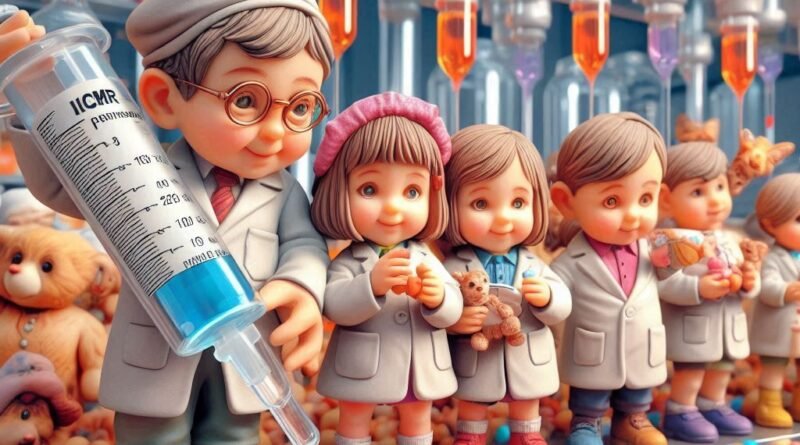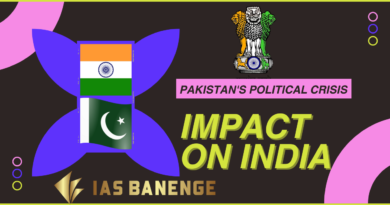ICMR Seeks Partners for Hydroxyurea Development for Children|Ias Banenge
Context:
The Indian Council of Medical Research (ICMR) seeks partners for a new project to develop and commercialize a low-dose or children’s version of hydroxyurea, aimed at treating sickle cell disease in India. Eligible organizations are invited to express their interest in this initiative.
Relevance:
GS II: Health
READ MORE- About Chang’e 6 Mission
Dimensions of the Article:
- Sickle Cell Anaemia
- Indian Government Initiatives to reduce Sickle Cell Anaemia
- About the National Sickle Cell Anaemia Elimination Mission
Hydroxyurea for Treating Sickle Cell Disease in Children
Overview and Mechanism
- Hydroxyurea: An oral chemotherapy drug prescribed for sickle cell disease.
- Helps patients by keeping blood cells round and flexible, facilitating better flow and oxygen delivery.
- Myelosuppressive Agent: Slows or stops the growth of blood-forming cells in the bone marrow, including chemotherapy, radiation therapy, and steroids.
Effects on Blood Cells
- Deoxygenated Sickle Cells: Tend to clump together and form chains or long polymers, becoming stickier and increasing blockage risks in small blood vessels.
- Fetal Hemoglobin (HbF): Prevents polymer formation, reducing the likelihood of blockages and organ damage.
- Hydroxyurea’s Role: Increases the amount of HbF in the blood, preventing complications from sickle cell disease.
Pharmaceutical Availability and Challenges
- Current Availability: Hydroxyurea is offered in 500 mg capsules or 200 mg tablets by most pharmaceutical companies in India.
- Pediatric Treatment Challenges: Lack of a suspension form makes low-dose treatment difficult for children.
- Service providers must break down high-dose tablets, risking dose accuracy and efficacy.
- Need for Pediatric Formulation: Considering the high number of sickle cell disease cases and the goal of eliminating the disease in India by 2047, a pediatric formulation of hydroxyurea is essential.
Sickle Cell Anaemia
- Haemoglobin which is tasked with carrying oxygen to all parts of the body, has four protein subunits — two alpha and two beta.
- In some people, mutations in the gene that creates the beta subunits impact the shape of the blood cell and distorts it to look like a sickle.
- A round red blood cell can move easily through blood vessels because of its shape but sickle red blood cells end up slowing, and even blocking, the blood flow.
- Moreover, sickle cells die early, resulting in a shortage of red blood cells that deprive the body of oxygen.
- These obstructions and shortages may cause chronic anaemia, pain, fatigue, acute chest syndrome, stroke, and a host of other serious health complications.
- Without treatment, quality of life is compromised and severe cases can become fatal in the initial years of life.
Symptoms
The symptoms of sickle cell anaemia can vary from person to person, but common symptoms include:
- Painful episodes (sickle cell crisis)
- Anaemia
- Fatigue and weakness
- Shortness of breath
- Delays in growth and development
- Joint pain
- frequent infections
Treatment
Currently, there is no cure for sickle cell anaemia, but treatments are available to manage the symptoms and prevent complications.
- Pain management
- Blood transfusions
- Antibiotics to prevent infections
- Hydoxyurea, a medication to reduce the frequency of sickle cell crises
- Stem cell transplantation in some cases
Indian Government Initiatives to reduce Sickle Cell Anaemia
- The Indian Council of Medical Research and the National Rural Health Mission in different States are undertaking outreach programmes for better management and control of the disease.
- The Ministry of Tribal Affairs launched a portal wherein people can register themselves if they have the disease or the trait, in order to collate all information related to SCA among tribal groups.
- In the Budget, the Union Health Minister said the government plans to distribute “special cards” across tribal areas to people below the age of 40.
- The cards will be divided into different categories based on the screening results.
- The mission will receive funding under the National Health Mission.
National Sickle Cell Anaemia Elimination Mission:
- The mission aims to tackle the significant health challenges associated with sickle cell disease (SCD), with a particular focus on the tribal population.
- It represents a crucial milestone in the Government’s ongoing efforts to eliminate SCD as a public health issue by 2047.
Objectives of the Mission:
Provision of Affordable and Accessible Care:
- Ensure that all SCD patients have access to affordable and easily accessible healthcare services.
- Improve the availability and affordability of SCD treatments and medications.
Quality of Care:
- Enhance the quality of care provided to SCD patients.
- Implement measures to ensure that healthcare facilities meet the required standards for SCD management.
Prevalence Reduction:
- Implement strategies to reduce the prevalence of SCD in the population.
- Focus on early detection and prevention methods to minimize the number of new SCD cases.
Health Promotion:
- Raise awareness about SCD through health promotion campaigns.
- Provide pre-marital genetic counseling to educate individuals about the risks associated with SCD.
Prevention:
- Conduct universal screening programs to identify SCD cases at an early stage.
- Emphasize the importance of early detection and prompt intervention to prevent complications.
Holistic Management & Continuum of Care:
- Develop a comprehensive management approach for individuals with SCD.
- Establish coordinated care across primary, secondary, and tertiary healthcare levels.
- Ensure adequate treatment facilities at tertiary healthcare institutions.
Patient Support System:
- Establish a robust support system for SCD patients.
- Provide guidance, counseling, and emotional support to patients and their families.
Community Adoption:
- Encourage community involvement in SCD prevention and care.
- Promote the adoption of preventive measures and support systems within local communities.
Coverage Targets:
- The mission aims to reach a total of 7 crore people.
- Provide screening, counseling, and care services for individuals with SCD within a three-and-a-half-year timeframe.
-Source: The Hindu




